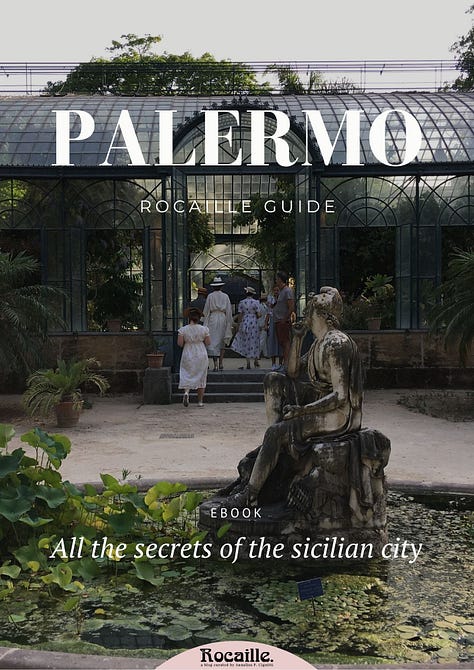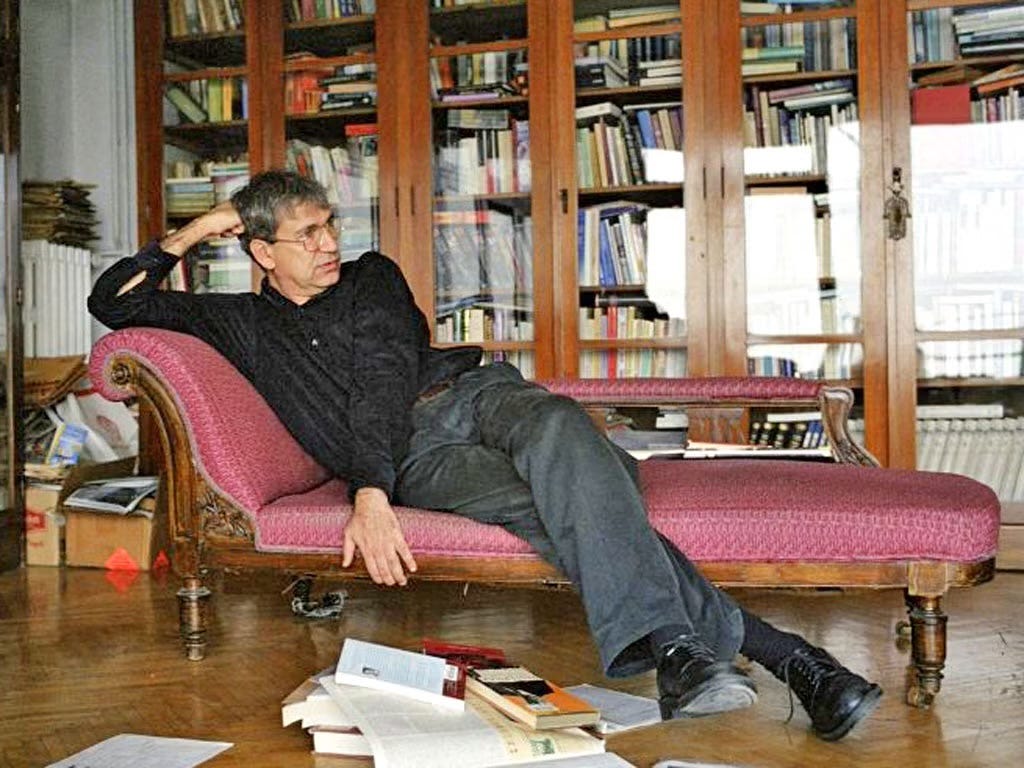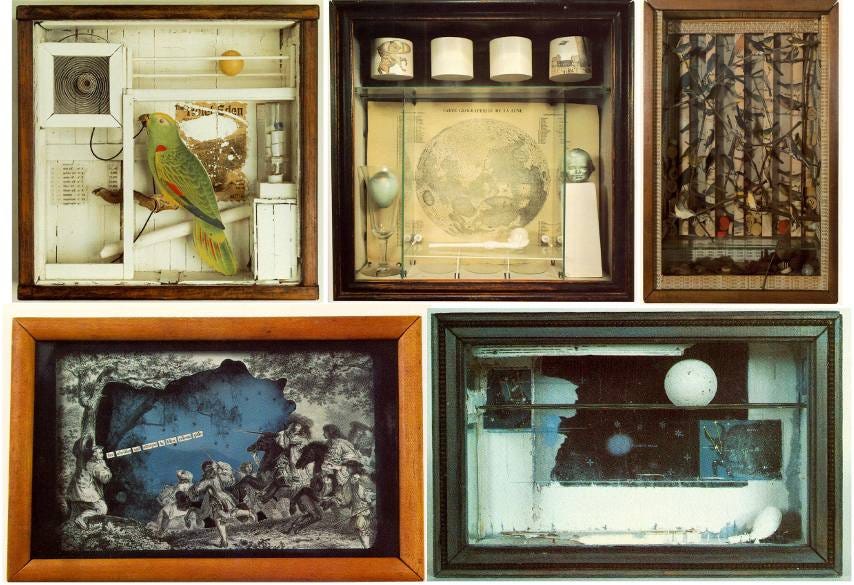#43 Rocaille Newsletter | Innocence is always a paradox
Collezionisti degli oggetti del quotidiano e ricercatori di innocenza: da Pamuk a Cornell, fino alla Natalie Portman bambina in Léon.
Questa è la newsletter gratuita di rocaille.it. La invio ogni mese, se non volete più riceverla potete cancellarvi dal link in fondo, se invece volete passare alla versione a pagamento potete farlo cliccando qui.
This is rocaille.it's free newsletter, I send it every month, if you no longer want to receive it you can unsubscribe from the link at the bottom. If you would like to upgrade to the paid version, you can do so by clicking here.
Troverete tre bambine in questa newsletter, la prima è quella che vedete: Casorati la dipinge su un tappeto a fiori a fondo rosso, che sembra perdersi all’infinito. Davanti a lei sono riversati i suoi giocattoli e altre cose che guarda con malinconia. Assorta nei suoi pensieri, è illuminata in questo momento eterno delle cose.
Il tema di questa newsletter è l’innocenza. A seguire troverete la consueta selezione di notizie tra mostre, articoli, novità e altre cose che succedono in questo mondo. Poi ci sono i miei eventi, viaggi e ebook.
Le newsletter dei mesi precedenti potete leggerle nell’archivio.
La newsletter a pagamento del mese, che arriverà il 22 maggio, sarà una Guida Rocaille a Istanbul, con informazioni che non ho pubblicato né sul blog né sui social, in basso potete vedere l’anteprima. Potete abbonarvi facendo una donazione minima di 30€ qui (è valida un anno).
Qualcuno si sarà accorto che la newsletter di aprile non è uscita: è vero ma, ahimè, non ho avuto davvero tempo. Mi dispiace molto per chi l’aspettava, posso dire a mia discolpa che per elaborare un tema c’è bisogno di tempo, affinché cresca nei pensieri e si articoli in modo organico legandosi agli altri riferimenti della memoria. Così, quando hai da fare tante cose, rimane poco spazio e poca tranquillità per pensare e ultimamente è stato così.
Se mi seguite su Instagram, sapete che i primi di maggio sono stata quasi una settimana a Istanbul, un viaggio bellissimo di cui parlerò nella prossima newsletter dedicata agli abbonati; il prossimo fine settimana invece ci sarà la Rocaille Experience I segreti della Tuscia IV. E’ l’ultima che farò in Tuscia. Sono rimasti 3 posti: se volete unirvi in basso trovate tutte le info!
Innocence is always a paradox
Collectors of the everyday life objects and seekers of innocence: from Pamuk to Cornell to Natalie Portman in Léon.
You will find three little girls in this newsletter, the first is the one you see: Casorati paints her on a red background flowered carpet, which seems to be endlessly lost. In front of her are poured her toys and other things that she looks at wistfully. Absorbed in her thoughts, she is enlightened in this eternal moment of things.
The theme of this newsletter is innocence. Next you will find the usual selection of news including exhibitions, articles, news and other things going on in this world. Then there are my events, travels and ebooks. Previous months' newsletters you can read in the archive.
This month's paid newsletter, coming May 22, will be a Guide to Istanbul, with information that I have not published either on the blog or on social, below you can see the preview. You can subscribe by making a minimum donation of 30€ here (it is valid for one year).
Some may have noticed that the April newsletter did not come out: true but, alas, I really did not have time. I feel very sorry for those who were waiting for it, I can say in my defense that to work out a theme you need time for it to grow in your thoughts and to organically articulate itself by tying in with the other references in your memory. Thus, when you have so much to do, there is little space left and little peace of mind to think about, and lately that has been the case.
If you follow me on Instagram, you know that in early May I spent almost a week in Istanbul, a beautiful trip that I will talk about in the next newsletter dedicated to subscribers; next weekend, on the other hand, there will be the Rocaille Experience The Secrets of Tuscia IV. It is the last one I will do in Tuscia. There are 3 places left: if you want to join below you will find all the info!
Innocence is always a paradox
Parlando del poeta gallese Dylan Thomas (1914 – 1953), il suo amico Vernon Watkins scrisse che “L’innocenza è sempre un paradosso”. Chi la ha non ne è cosciente, non se ne rende conto. Crescendo, infatti, si perde e il paradosso è proprio questo: può vederla solo chi non ce l’ha più.
Riflettevo su questa parola mentre visitavo il Museo dell’Innocenza a Istanbul, evocativo nome per un museo che altro non è che una raccolta di oggetti di uso quotidiano, senza alcun valore particolare. È stato creato dallo scrittore turco Orhan Pamuk (1952) ed è collegato al romanzo omonimo che iniziò a scrivere nel 2002. Racconta la storia d’amore tormentatissima tra Kemal e la bella Füsun, ambientata negli ultimi decenni del Novecento turco, a partire dagli anni ‘70 fino al 2000. Lo scrittore ricostruisce, come sottofondo delle vicende dei protagonisti, la vita quotidiana di Istanbul, descrivendo le cose che si mangiavano, leggevano, vivevano in quegli anni.
Speaking of Welsh poet Dylan Thomas (1914 - 1953), his friend Vernon Watkins wrote that “Innocence is always a paradox”. Those who have it are not aware of it, do not realize it. As it grows up it is lost, and that is the paradox: only those who no longer have it can see it.
I was reflecting on this word while visiting the Museum of Innocence in Istanbul, an evocative name for a museum that is nothing more than a collection of everyday objects of no particular value. It was created by Turkish writer Orhan Pamuk (1952) and is related to the novel of the same name that he began writing in 2002. It tells the tormented love story between Kemal and the beautiful Füsun, set in the last decades of the Turkish twentieth century, from the 1970s to 2000. The writer reconstructs, as a background to the protagonists' events, the daily life of Istanbul, describing the things people ate, read, and lived in those years.
Mentre scrive, Pamuk ha in mente di creare anche un museo con gli oggetti che sono testimoni del romanzo ma anche memoria del passato recente della città di Istanbul. Compra un edificio del 1897, in una stradina del quartiere Çukurcuma, e apre il museo nel 2012. Al piano terra crea un’installazione sorprendente: i 4213 mozziconi di sigarette fumate da Füsun nelle ore passate con Kemal. Poi, divisi in 83 vetrine, come gli 83 capitoli del romanzo, e disposti in teche costruite per l’occasione, una collezione di migliaia di oggetti comuni, menzionati nel romanzo: fiammiferi, fogli di giornale, spazzolini da denti, occhiali, gioielli, fotografie, bicchieri di liquore, scarpe, menù dei ristoranti, maniglie delle porte, chiavi etc
Il Museo dell’innocenza è un progetto che non ha eguali nella letteratura e nell’arte perché è romanzo e museo, ma in fondo è un’installazione che riflette sulla parola, sulla letteratura, sul ricordo. Dice Pamuk: “Gli oggetti che sopravvivono ai momenti felici conservano i ricordi, i colori, l’odore e l’impressione di quegli attimi con maggiore fedeltà di quanto facciano le persone che procurano quella felicità”.
While writing, Pamuk also plans to create a museum with the objects that are witnesses to the novel but also a memory of Istanbul's recent past. He bought an 1897 building on a narrow street in the Çukurcuma district and opened the museum in 2012. On the ground floor he creates a striking installation: the 4213 cigarette butts smoked by Füsun in the hours spent with Kemal. Then, divided into 83 showcases, like the 83 chapters of the novel, and arranged in display cases built for the occasion, a collection of thousands of common objects mentioned in the novel: matches, newspaper sheets, toothbrushes, glasses, jewelry, photographs, liquor glasses, shoes, restaurant menus, door handles, keys etc.
The Museum of Innocence is a project that is unparalleled in literature and art because it is both novel and museum, but at heart it is an installation that reflects on speech, literature, and remembrance. Says Pamuk “Objects that survive happy moments preserve the memories, colors, smell and impression of those moments with greater fidelity than do the people who provide that happiness.”




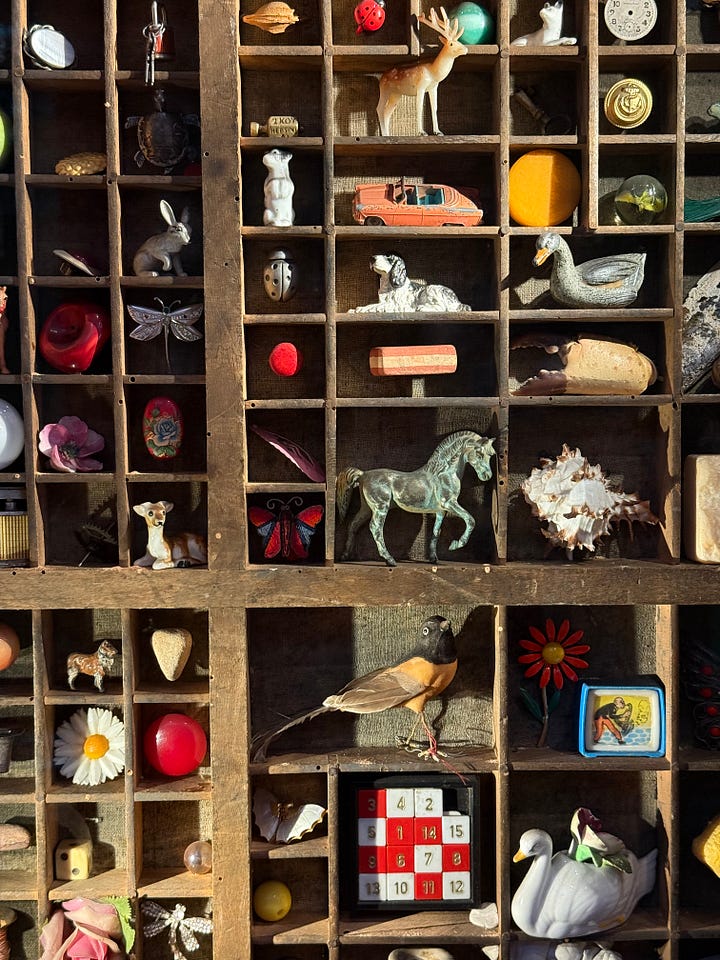
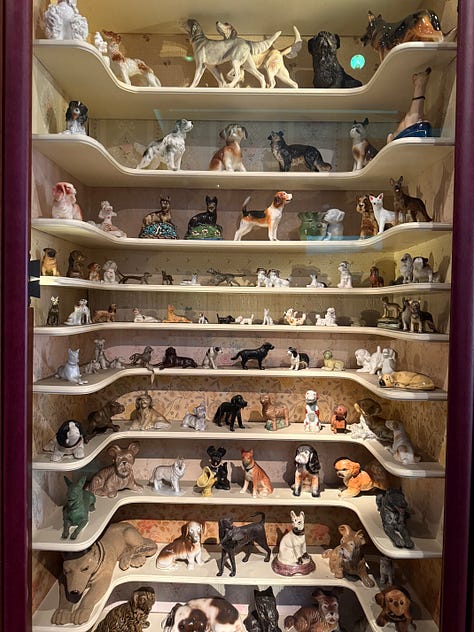

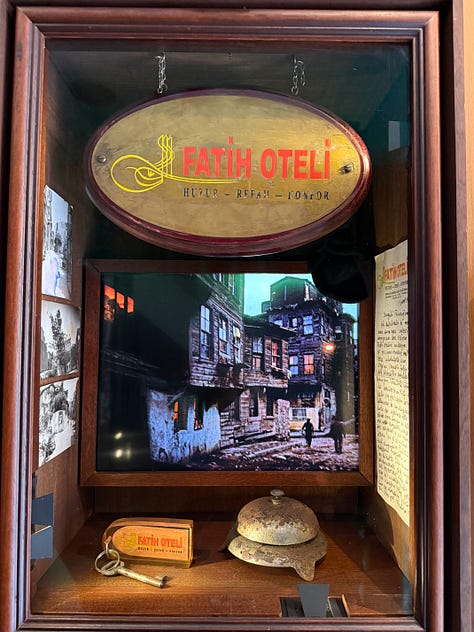

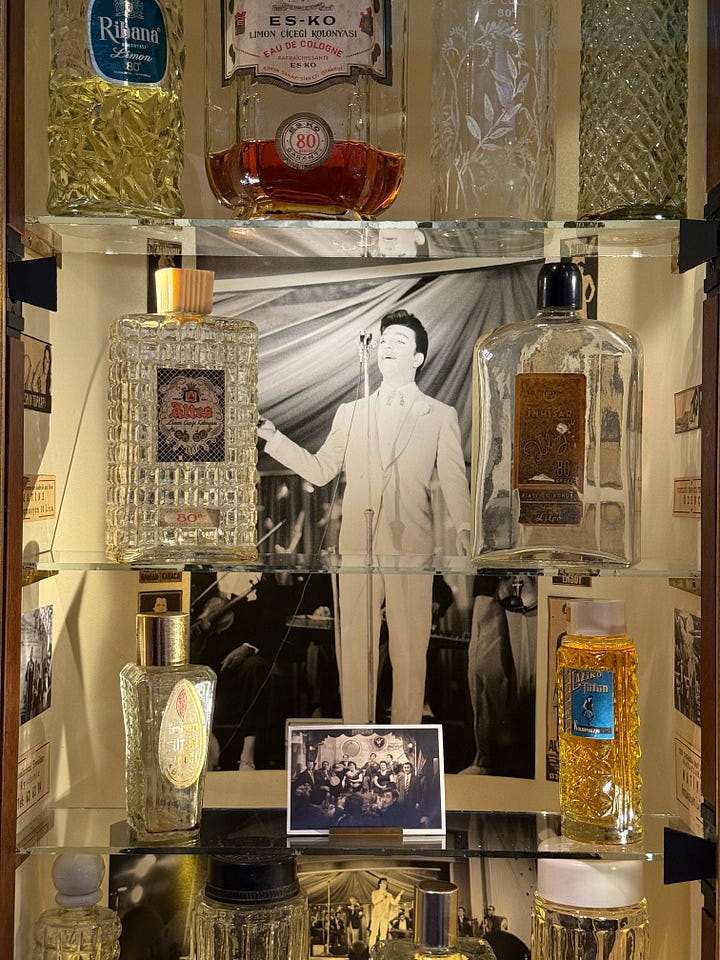
Mentre guardavo quelle teche, piccole wunderkammer del quotidiano, non ho potuto non pensare alle scatole di Joseph Cornell (1903-1972), secondo me il riferimento più prossimo al lavoro di Pamuk (come del resto ammette lui stesso qui).
Cornell nacque a Nyack, nella stessa città dove qualche anno prima era nato Edward Hopper. Suo padre morì quando aveva 14 anni e si trasferì nel Queens, con la madre e i fratelli. Iniziò a lavorare come venditore porta a porta intorno agli anni venti ed è in questo periodo, quando percorreva a piedi Lower Manhattan, che iniziò a esplorare la città e a collezionare gli oggetti che trovava: souvenir, fotografie, stampe, cartoline, biglietti dei tram, scontrini, ritagli, conchiglie, legni o vetri, rami, foglie, bottiglie, trovati per caso in antiquari, librerie, mercati delle pulci, alimentari o sulle spiagge di Long Island. Comincia ad assemblare le sue prime Shadow Boxes negli anni Trenta: scatole con all'interno piccoli oggetti o immagini ritagliate, dei diorama pieni di significati nascosti e sottesi, scrigni della memoria.
As I looked at those display cases, little wunderkammer of the everyday, I could not help but think of the boxes of Joseph Cornell (1903-1972), in my opinion the closest reference to Pamuk's work (as indeed he himself admits here).
Cornell was born in Nyack, in the same town where Edward Hopper had been born a few years earlier. His father died when he was 14 and he moved to Queens with his mother and siblings. He began working as a door-to-door salesman around the 1920s, and it was during this period, when he was walking through Lower Manhattan, that he began exploring the city and collecting the objects he found: souvenirs, photographs, prints, postcards, streetcar tickets, receipts, clippings, shells, wood or glass, branches, leaves, bottles, found by chance in antique dealers, bookstores, flea markets, grocery stores or on the beaches of Long Island. He began assembling his first Shadow Boxes in the 1930s: boxes with small objects or cut-out images inside, dioramas full of hidden and underlying meanings, treasure chests of memory.
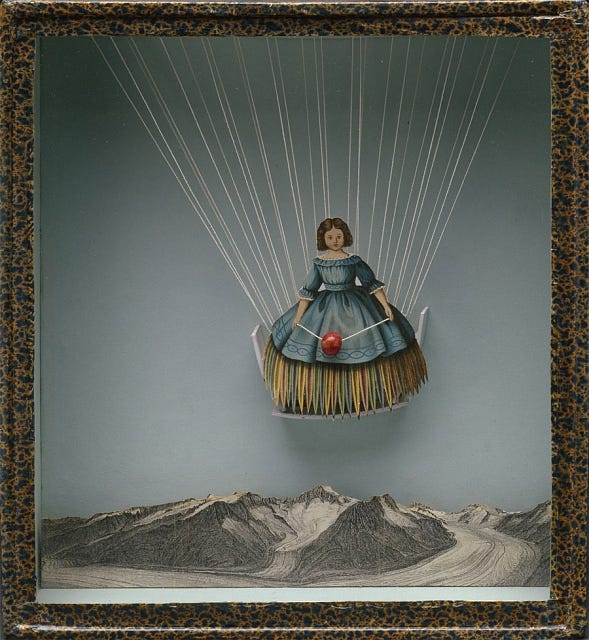
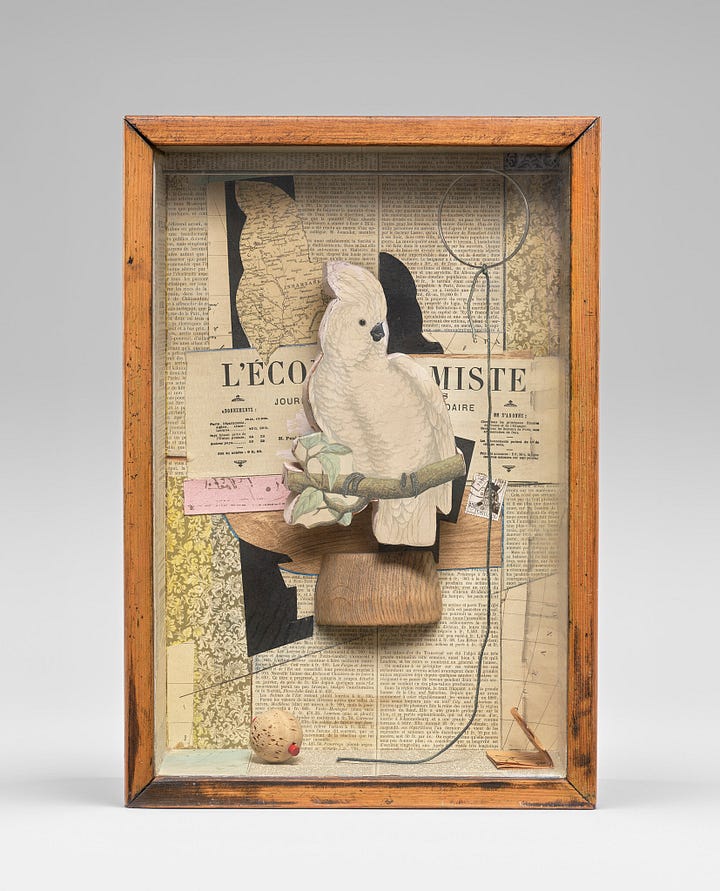
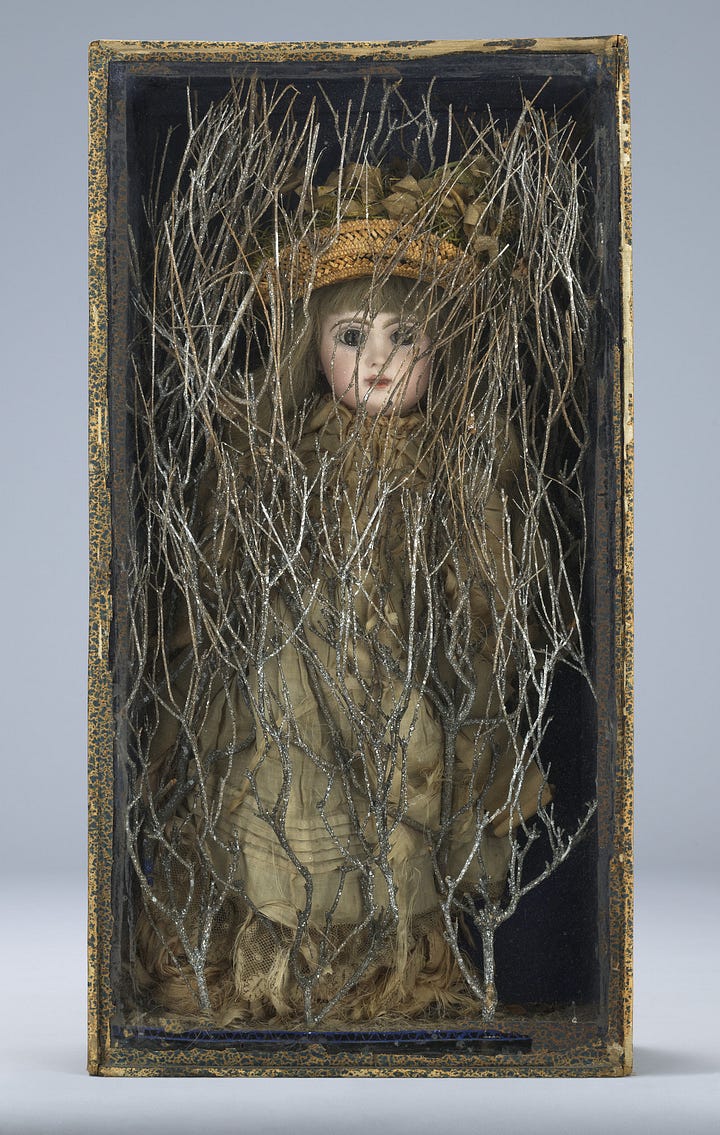
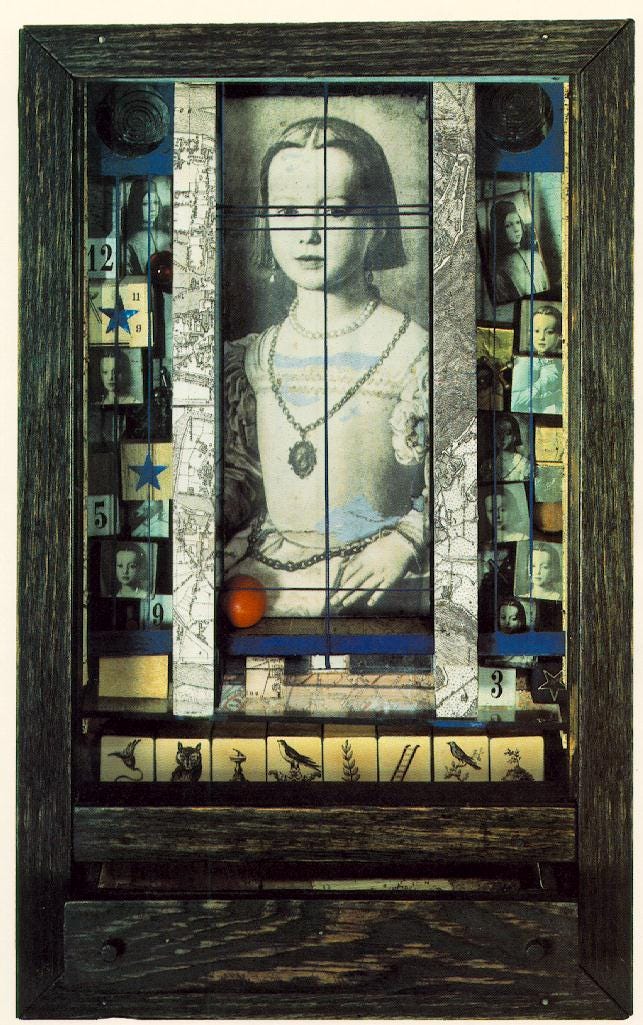
Non sapeva disegnare, dipingere o scolpire. Non ebbe alcuna educazione artistica, lavorava solo per sostenere sua madre e suo fratello disabile e raramente si allontanava da casa. Visse una vita nascosta, non si riteneva un artista, fino a quando un giorno il gallerista Julian Levy rimase colpito da alcuni suoi lavori e gli propose di esporli alla prima mostra surrealista di New York nel 1932.
Era amico di Duchamp, Motherwell, Rothko, De Kooning e Warhol, tuttavia rimase un artista profondamente solitario. Oggi è considerato l'esponente americano più importante del surrealismo, sebbene non ne abbia mai esplicitamente fatto parte. Il suo lavoro, come lui stesso lo definì, “è solo la conseguenza naturale del mio amore per la città”.
He could not draw, paint or sculpt. He had no art education, worked only to support his mother and disabled brother, and rarely left home. He lived a hidden life, not considering himself an artist, until one day gallery owner Julian Levy was struck by some of his work and suggested he exhibit it at the first Surrealist exhibition in New York in 1932.
He was friends with Duchamp, Motherwell, Rothko, De Kooning and Warhol, yet he remained a deeply reclusive artist. Today he is considered the most important American exponent of Surrealism (although he was never explicitly part of it). His work, as he called it, “is just the natural consequence of my love for the city.”
Cornell era affascinato, quasi incantato, dalle connessioni tra gli oggetti, connessioni che vanno oltre l'hic et nunc e coinvolgono il passato, i ricordi, i pensieri interiori e le suggestioni private. Questi oggetti senza valore diventano pieni di significati grazie allo sguardo meravigliato dello scrittore o dell’artista, che rivela la loro poesia segreta. Cose altrimenti destinate ai rifiuti diventano eterni cimeli del museo della nostra vita.
Face anche dei corti, primissimi esperimenti artistici di video, che si trovano anche su YouTube. Il mio preferito è Nymphlight, del 1957, ambientato a Bryan Park: una bambina, in un diafano abito bianco e un ombrellino rotto, entra nel parco in una giornata di sole, passando davanti alla fontana e disturbando i piccioni.
Cornell was fascinated, almost enchanted, by the connections between objects, connections that go beyond the hic et nunc and involve the past, memories, inner thoughts and private suggestions. These worthless objects become full of meaning through the writer's or artist's astonished gaze, revealing their secret poetry. Things otherwise destined for waste become eternal heirlooms in the museum of our lives.
He also makes short films, very early artistic experiments in video, which can also be found on YouTube. My favorite is Nymphlight, from 1957, set in Bryan Park: a little girl, in a diaphanous white dress and a broken parasol, enters the park on a sunny day, walking past the fountain and disturbing the pigeons.
Questa bambina innocente, che vaga per New York, l’ho ritrovata nel personaggio di un film di Luc Besson: Léon - The Professional (1994). La piccola Mathilda, interpretata da una giovanissima Natalie Portman, decide di diventare un killer per vendicare il fratellino ucciso e vaga per le strade delle Grande mela, senza sapere dove andare, col suo orsacchiotto e una pistola. Nonostante la voglia di vendetta, la ricerca della morte insita in un lavoro di violenza, brilla in lei qualcosa di sorprendentemente innocente perché “our innocence goes awfully deep”.
This innocent little girl, wandering around New York, I found in the character of a Luc Besson film: Léon - The Professional (1994). Little Mathilda, played by a very young Natalie Portman, decides to become a killer to avenge her murdered little brother and wanders the streets of the Big Apple, not knowing where to go, with her teddy bear and a gun. Despite the desire for revenge, the quest for death inherent in a work of violence, something surprisingly innocent shines in her because “our innocence goes awfully deep.”
“I know we're not saints or virgins or lunatics; we know all the lust and lavatory jokes, and most of the dirty people; we can catch buses and count our change and cross the roads and talk real sentences. But our innocence goes awfully deep, and our discreditable secret is that we don't know anything at all, and our horrid inner secret is that we don't care that we don't.”
Dylan Thomas, from a letter to his wife, November/December 1936
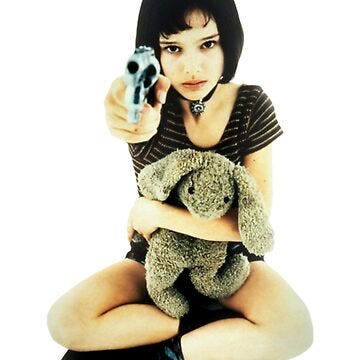
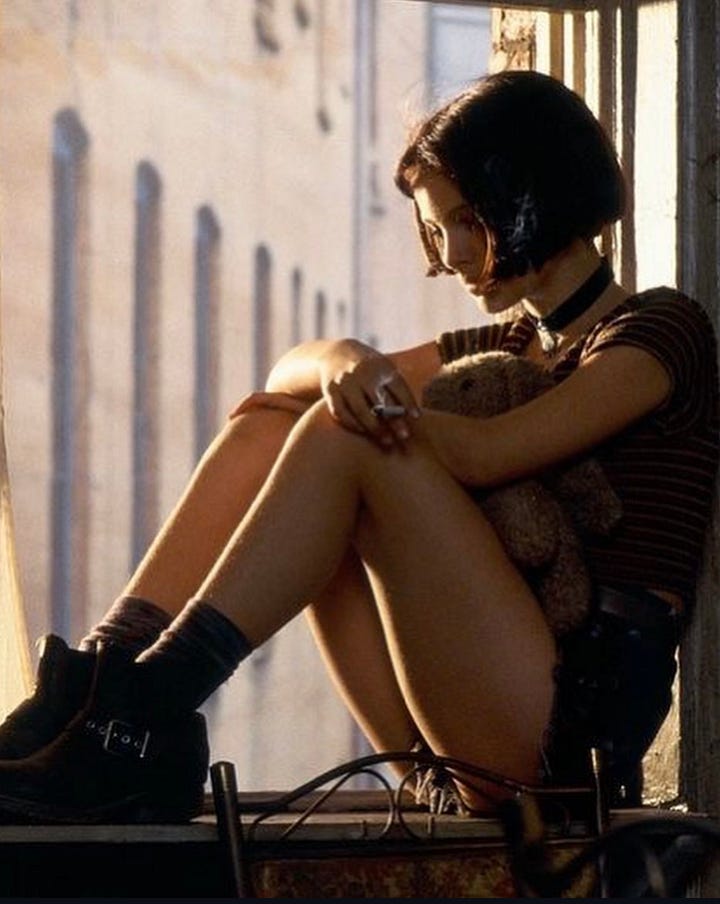
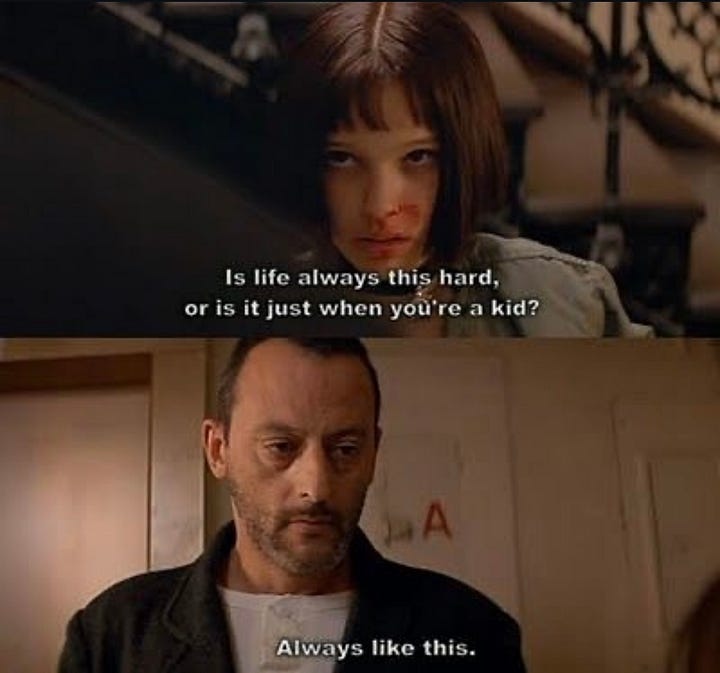
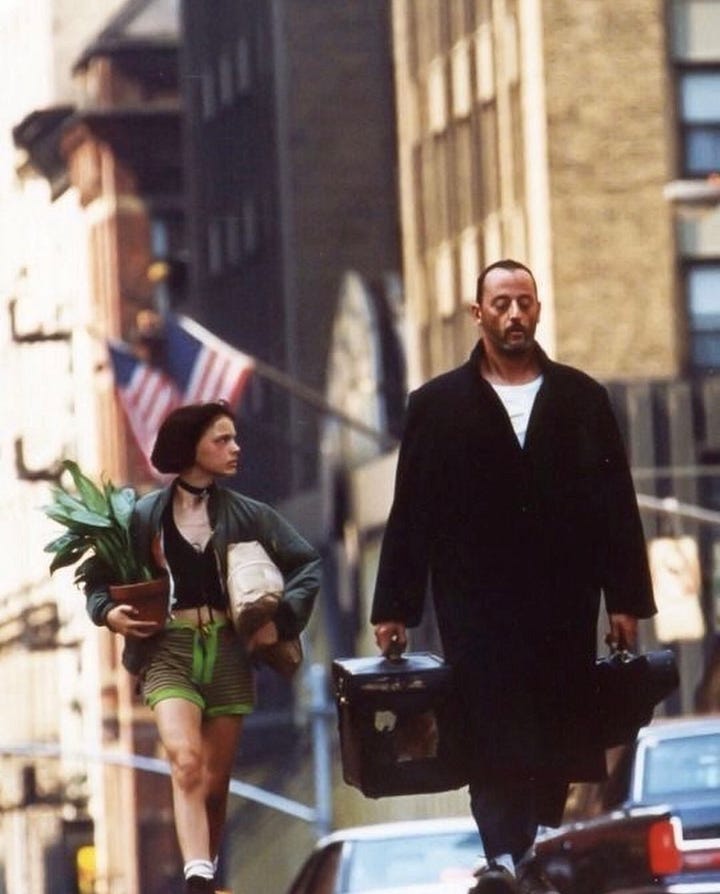
News, events, exhibitions, articles
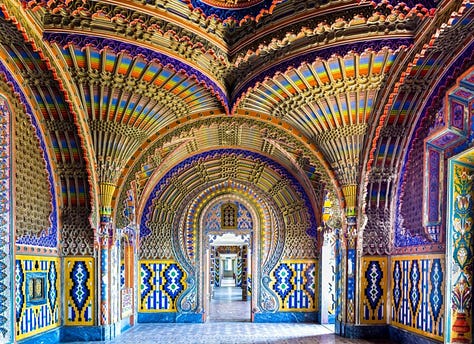
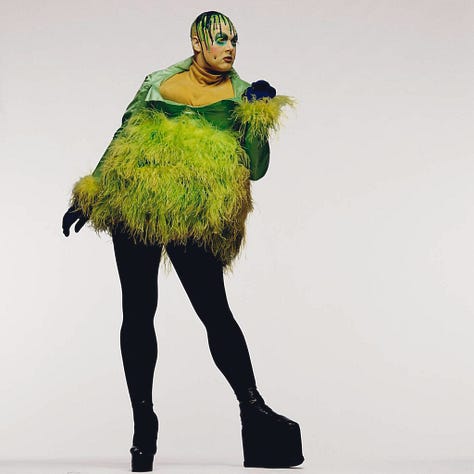
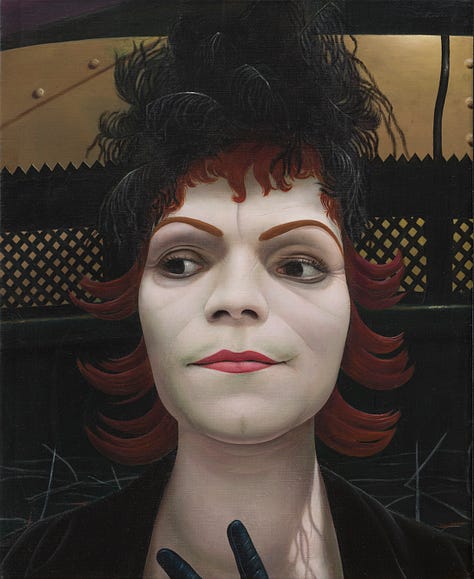
E’ morto Raniero Gnoli, immenso studioso orientalista, storico delle religioni e indologo con un senso estetico altissimo e una casa tra le più belle che abbia mai visto. La visitai una volta e ne parlai qui.
Uscirà nei prossimi mesi un film biografico su Anthony Bourdain, lo chef americano morto tragicamente che per primo è passato della cucina professionale alla tv con il programma televisivo Kitchen Confidential. Amo moltissimo Bourdain e sono scettica sulla riuscita del film, ma devo dire che l’attore scelto, Domenic Sessa, gli somiglia molto.
Il tema del MET Gala di quest’anno era Black dandy, il dandy nero, che sembra un’invenzione recente ma in realtà non è così. Tra l’altro è tornata la moda maschile al MET, dopo più di vent’anni, e devo dire che è stato assai più interessante degli anni precedenti.
La prossima domenica 25 maggio è la Giornata Nazionale delle Dimore Storiche, un evento promosso dall’Associazione Dimore Storiche Italiane (ADSI) che permette ai cittadini di esplorare gratuitamente castelli, palazzi, ville e residenze private solitamente non accessibili. Qui l’elenco per regione.
ROMA
Bella mostra alla GAM su Nino Bertoletti, artista poliedrico, capace di spaziare con la stessa intensità dalla pittura alla grafica, dall’architettura al giornalismo fino al collezionismo. Fino al 14 settembre.
Apre a Roma il primo Orient Express hotel del mondo, è l’ex Hotel La Minerva, dietro al Pantheon, tutto in stile déco e con rimandi all’oriente.
La città cambia e apre anche un altro hotel, il The Social Hub Roma, nell’area dell’ex Dogana di San Lorenzo.
Riapre la Casina del Salvi al Celio, nata proprio come coffe house della passeggiata archeologica ottocentesca sul colle del Celio.
Dal 25 maggio si svolgerà la tredicesima edizione di Open House, evento durante il quale gli istituti, le sedi di rappresentanza, i musei, i palazzi storici e le accademie culturali, ma anche i siti di interesse scientifico-culturale e alcune insolite location (tra cui la Casa-studio Luigi Serafini) aprono al pubblico.
- Raniero Gnoli, an immense Orientalist scholar, historian of religions and Indologist with the highest sense of aesthetics and one of the most beautiful houses I have ever seen, has died. I visited it once and talked about it here.
- There is a biographical film coming out in the next few months about Anthony Bourdain, the American chef who died tragically and who first went from professional cooking to TV with the TV show Kitchen Confidential. I love Bourdain very much and am skeptical about the success of the film, but I must say that the actor chosen, Domenic Sessa, looks very much like him
- The theme of this year's MET Gala was Black dandy, which seems like a recent invention but really is not. After more than two decades, men's fashion is back at MET and I must say it was far more interesting than the previous themes.
- Next Sunday, May 25, marks the return of the National Day of Historic Houses, an event sponsored by the Association of Historic Italian Houses (ADSI) that allows citizens to explore castles, palaces, villas and private residences usually not accessible free of charge. Here is the list by region.
ROME
- Fine exhibition at GAM on Nino Bertoletti, a multifaceted artist, capable of ranging with equal intensity from painting to graphics, architecture to journalism to collecting. Through Sept. 14.
- The world's first Orient Express hotel opens in Rome; it is the former Hotel La Minerva, behind the Pantheon, all in Art Deco style and with references to the Orient.
- The city is changing, and another hotel, The Social Hub Roma, also opens in the area of the former San Lorenzo Customs House.
- The Casina del Salvi al Celio, which was created precisely as a coffe house of the 19th-century archaeological promenade on the Caelian Hill, reopens.
- Starting May 25, the 13th edition of Open House will take place, an event during which institutes, representative offices, museums, historic buildings and cultural academies, as well as sites of scientific-cultural interest and some unusual locations (including the Luigi Serafini House-studio) open to the public.
ALTROVE
ROVERETO Al MART, in occasione dei cento anni dalla nascita del Realismo Magico, una bellissima mostra mette in dialogo le opere di Pyke Koch e di Cagnaccio di San Pietro. Fino al 31 agosto.
MILANO E’ stato inaugurato da qualche mese il più grande parco termale d’Europa: le Terme de Montel, un’oasi liberty, da una sorgente a 400 metri di profondità. Realizzato nelle ex Scuderie De Montel, nel quartiere San Siro di Milano.
TORINO Il Castello di Rivoli presenta la prima grande mostra in Italia dell’artista Rebecca Horn, recentemente scomparsa. Nessun’altra istituzione museale pubblica aveva finora presentato un lavoro così approfondito sull’opera dell’artista. Cutting Through the Past, fino al 21 settembre.
FIRENZE Riapre il giardino settecentesco, finora segreto, di Villa La Quiete, sulla collina di Castello. Fu realizzato per volere dell’Elettrice Palatina Anna Maria Luisa, ultima discendente dei Medici. Dopo il restauro finanziato con i fondi del PNRR, si mostra per la prima volta al pubblico.
FERRARA Palazzo Diamanti ospita per questa stagione due protagonisti dell'arte europea tra Otto e Novecento: Alphonse Mucha e Giovanni Boldini. Fino al 20 luglio.
PIACENZA Per celebrare il bicentenario dalla nascita di uno dei macchiaioli più celebri, una grande mostra su Giovanni Fattori, con 170 opere esposte al Centro d’arte contemporanea XNL. Fino al 26 giugno.
VENEZIA Alla Fondazione Cini una grande retrospettiva su Robert Mapplethorpe, fino al 23 novembre.
VENEZIA Oltre quaranta opere di Man Ray nella nuova mostra della Galleria Tommaso Calabro, che da poco ha fondato qui una nuova sede, dopo aver chiuso quella bellissima di Milano. Fino al 21 giugno.
TOSCANA Dopo 30 anni di abbandono, il Castello di Sammezzano è stato acquisito da un imprenditore e ha iniziato la riqualificazione.
SICILIA Il 5 maggio ha aperto le porte, negli spazi restaurati e rifunzionalizzati dell’ex Convento del Carmine a Scicli, il nuovo museo MACC. Per la prima mostra l’omaggio a Isgrò, con scenografica installazione estesa alla facciata del museo.
PUGLIA A Lecce una mostra delle opere su carta del grande artista Sandro Chia, tra i fondatori della Transavanguardia, ospitata presso la Fondazione Biscozzi | Rimbaud e supportata dalla Galleria Mazzoli di Modena. Fino al 15 giugno.
MARCHE Conosciuto soprattutto come stilista, costumista e designer, Antonio Marras ha creato per il Forte Malatesta di Ascoli Piceno una mostra spettacolare, senza cadere mai nella retorica dell’autoreferenzialità. Fino al 30 ottobre.
PARIGI Alla Fondation Louis Vuitton ha aperto una grande mostra su David Hockney con oltre 400 opere tra olii, disegni, fotografici, a inchiostro, installazione e video immersivi. Fino al 31 agosto.
LONDRA Alla Tate Modern c’è una mostra su Leigh Bowery, artista, drag queen e designer di moda australiano, musa del pittore Lucian Freud e influente personalità borderline, che fece scandalo nella Londra metà thatcheriana e metà anticonformista negli anni ‘80. Fino al 31 agosto.
ELSEWHERE
- ROVERETO At MART, on the occasion of the 100th anniversary of the birth of Magic Realism, a beautiful exhibition puts works by Pyke Koch and Cagnaccio di San Pietro in dialogue. Through Aug. 31.
- MILAN The largest thermal park in Europe opened a few months ago: the Terme de Montel, an Art Nouveau oasis from a spring 400 meters below ground. Built in the former Scuderie De Montel stables in Milan's San Siro district.
- TURIN The Rivoli Castle presents the first major exhibition in Italy of the recently deceased artist Rebecca Horn. No other public museum institution had so far presented such an in-depth work on the artist's work. Cutting Through the Past, through Sept. 21.
- FLORENCE The hitherto secret 18th-century garden of Villa La Quiete on Castello Hill reopens. It was created at the behest of Electress Palatine Anna Maria Luisa, the last descendant of the Medici family. After restoration financed with PNRR funds, it is being shown to the public for the first time.
- FERRARA Palazzo Diamanti hosts for this season two protagonists of European art between the 19th and 20th centuries: Alphonse Mucha and Giovanni Boldini. Through July 20.
- PIACENZA To celebrate the bicentenary of the birth of one of the most famous Macchiaioli painters, a major exhibition on Giovanni Fattori, with 170 works on display at the XNL Contemporary Art Center. Through June 26.
- VENICE At the Cini Foundation a major retrospective on Robert Mapplethorpe, through Nov. 23.
- VENICE More than forty works by Man Ray in the new exhibition of the Tommaso Calabro Gallery, which recently founded a new venue here after closing the beautiful one in Milan. Through June 21.
- TUSCANY After 30 years of neglect, Sammezzano Castle has been acquired by an entrepreneur and has begun redevelopment.
- SICILY On May 5, the new MACC museum opened its doors in the restored and refunctionalized spaces of the former Convento del Carmine in Scicli. For the first exhibition the homage to Isgrò, with scenic installation extended to the museum's facade.
- PUGLIA In Lecce, an exhibition of works on paper by the great artist Sandro Chia, one of the founders of the Transavanguardia movement, hosted at the Biscozzi | Rimbaud Foundation and supported by Galleria Mazzoli of Modena. Through June 15.
- MARCHE Known primarily as a stylist, costume designer and designer, Antonio Marras has created a spectacular exhibition for Ascoli Piceno's Forte Malatesta, without ever falling into the rhetoric of self-referentiality. Through Oct. 30.
- PARIS A major exhibition on David Hockney has opened at the Fondation Louis Vuitton with more than 400 works including oils, drawings, photography, ink, installation and immersive video. Through Aug. 31.
- LONDON At the Tate Modern there is an exhibition on Leigh Bowery, the Australian artist, drag queen and fashion designer, muse of painter Lucian Freud and influential borderline personality who caused a scandal in half-Thatcher, half nonconformist London in the 1980s. Through Aug. 31.
Rocaille Experience:
The Secrets of Tuscia IV | 23-24-25 May 2025
Un viaggio di 3 giorni e 2 notti alla scoperta della Tuscia, la zona senza confini precisi che si divide tra il Lazio, la Toscana e l'Umbria. Partiremo da Bolsena, soggiornando nel b&b più bello del paese, che è anche una dimora storica: Palazzo Cozza Caposavi. Qui, nel grande salone affrescato, avremo la possibilità esclusiva di fare una cena a lume di candela: sarà un’occasione per presentarci e conoscerci meglio prima di partire per l’esplorazione. Il programma prevede la visita esclusiva di due dimore storiche: castelli, giardini segreti, ville, residenze d’artista. Si tratta sempre di luoghi fuori dalle rotte del turismo di massa e che raccontano storie e realtà spesso poco conosciute.
QUANDO?
Le attività dell'Experience coprono il quarto fine settimana di maggio: iniziano ufficialmente la sera del 23 maggio, con la cena nel palazzo, e finiscono la mattina (compresa) di domenica 25.
QUANTO?
La quota è a partire da 540€ per una persona singola / 900€ per una coppia.
COMPRENDE:
- 2 notti a Palazzo Cozza Caposavi (servizio b&b con colazione inclusa);
- 2 visite private con guida in due dimore storiche;
- una cena esclusiva a Palazzo Cozza Caposavi;
- mio accompagnamento durante tutta la durata del viaggio;
- mio ebook "Guida Rocaille alla Tuscia"
NON COMPRENDE: trasporti o altro non specificato.
COME PRENOTARE?
Dopo aver compilato il form qui, vi manderò le istruzioni per il pagamento.
PS E’ possibile prenotare fino ad esaurimento delle camere del palazzo (15).
NE SONO RIMASTE 3.
HAI DOMANDE?
Scrivimi a info@rocaille.it
A 3-day, 2-night trip to discover Tuscia, the area without precise borders that divides Lazio, Tuscany and Umbria. We will start from Bolsena, staying in the most beautiful b&b in the town, which is also a historical residence: Palazzo Cozza Caposavi. Here, in the large frescoed hall, we will have the exclusive opportunity to have a candlelight dinner: it will be an opportunity to introduce ourselves and get to know each other better before leaving for exploration. The program will include exclusive visits to two historical residences: castles, secret gardens, villas, artist residences. These are always places off the beaten path of mass tourism and tell stories and realities that are often little known.
WHEN
The Experience activities cover the fourth weekend in May: they officially begin on the evening of May 23, with dinner in the palace, and end on the morning (inclusive) of Sunday 25.
HOW MUCH?
The fee is from €540 for a single person / €900 for a couple.
INCLUDES:
- 2 nights at Palazzo Cozza Caposavi (b&b service with breakfast included);
- 2 private guided tours of two historic mansions;
- an exclusive dinner at Palazzo Cozza Caposavi;
- my accompaniment throughout the trip;
- my ebook “Rocaille Guide to Tuscia”
DOES NOT INCLUDE: transportation or other not specified.
HOW TO BOOK?
After filling out the form here , I will send you instructions for payment.
PS It is possible to make reservations while the building's rooms last (15). There are 3 left!
DO YOU HAVE QUESTIONS? Write to me at info@rocaille.it
PREVIEW
Exclusive newsletter - May 2025
The next exclusive newsletter will be a Guide to Istanbul.
Out on May 22.

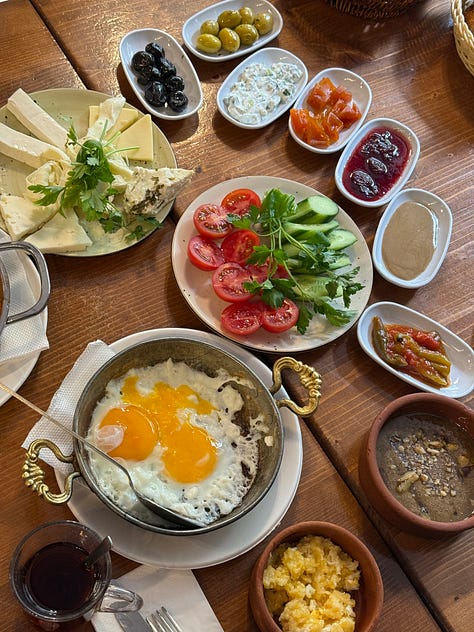
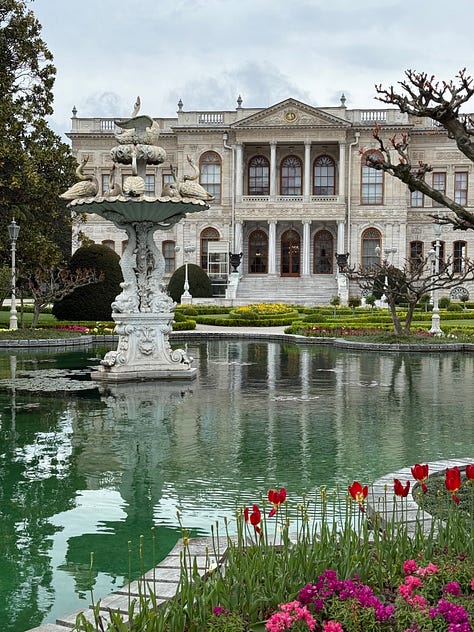
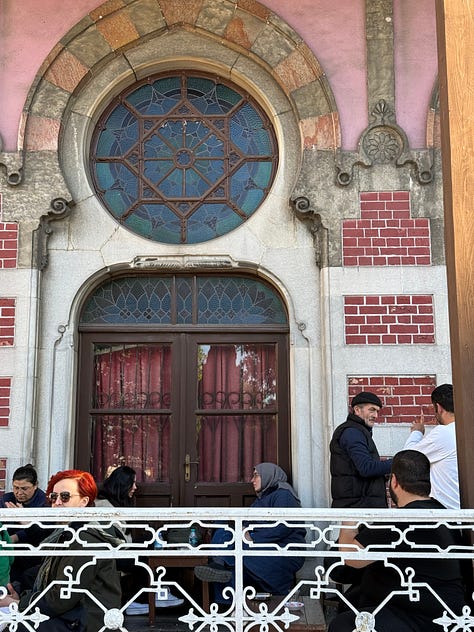
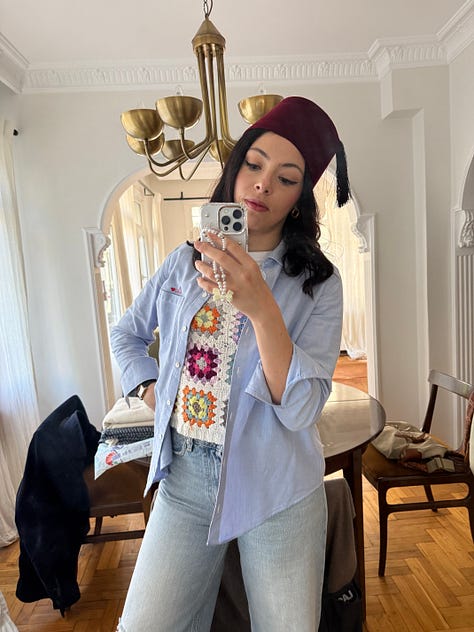




BUY MY EBOOKS
(italian & english)
